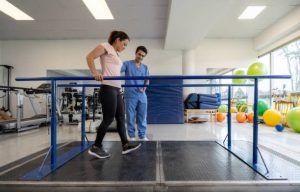Auditory Processing Disorder (APD) presents unique challenges for individuals in Adelaide, a city known for its cultural diversity and educational opportunities. Effective management of APD requires a multi-faceted approach that encompasses awareness, intervention, and support systems. In this article, we delve into the strategies and resources available for managing APD in Adelaide, empowering individuals to overcome obstacles and thrive in their auditory environment.
Understanding Auditory Processing Disorder:
 Before exploring management strategies, it’s crucial to grasp the essence of APD. APD is a neurological condition wherein the brain struggles to process auditory information effectively despite normal hearing abilities. Individuals with APD may find it challenging to comprehend speech, particularly in noisy environments, follow instructions, or distinguish between similar sounds.
Before exploring management strategies, it’s crucial to grasp the essence of APD. APD is a neurological condition wherein the brain struggles to process auditory information effectively despite normal hearing abilities. Individuals with APD may find it challenging to comprehend speech, particularly in noisy environments, follow instructions, or distinguish between similar sounds.
In Adelaide’s dynamic environment, characterised by bustling streets, lively classrooms, and social gatherings, individuals with APD face additional hurdles in their daily lives. However, with the right management strategies and support networks in place, they can learn to navigate their auditory world more effectively.
Accurate Diagnosis and Comprehensive Assessment:
Effective management of APD begins with accurate diagnosis and comprehensive assessment. In Adelaide, individuals can avail themselves of specialised audiologists and speech-language pathologists trained in diagnosing and treating APD. These professionals conduct a battery of tests to evaluate auditory processing skills, including auditory discrimination, sequencing, and memory.
Once diagnosed, individuals and their families gain valuable insights into the specific auditory processing difficulties they encounter. This understanding serves as a foundation for developing personalised management plans tailored to their unique needs and goals.
Multimodal Intervention Strategies:
Managing APD often entails a multimodal approach that addresses various facets of auditory processing difficulties. In Adelaide, individuals with APD have access to a range of intervention strategies designed to enhance auditory processing skills and improve communication abilities.
One such intervention is auditory training, which involves engaging in activities and exercises aimed at improving auditory discrimination and comprehension. These activities may include listening to recorded speech in varying environments, practising auditory memory exercises, and participating in speech-in-noise training sessions.
Additionally, speech-language therapy plays a pivotal role in helping individuals develop compensatory strategies to overcome specific challenges associated with APD. This may involve learning to utilise visual cues, such as lip-reading and facial expressions, to supplement auditory information, as well as honing language processing and communication skills.
Environmental Modifications and Accommodations:
In addition to targeted intervention strategies, managing APD often necessitates environmental modifications and accommodations to minimise auditory distractions and enhance communication effectiveness. In educational settings, teachers can implement classroom accommodations such as seating arrangements near the front, reducing background noise, and providing written instructions and visual aids alongside verbal information.
Similarly, in work and social environments, individuals with APD can benefit from advocating for accommodations such as quiet workspaces, using assistive listening devices, and requesting written communication whenever feasible. By fostering a supportive auditory environment, individuals with APD can better focus on essential auditory cues and actively participate in various activities and interactions.
Community Support and Resources:
In Adelaide, individuals with APD and their families have access to a wealth of community support and resources to aid them in managing the condition. Community organisations, support groups, and online forums provide platforms for individuals to connect with others facing similar challenges, share experiences, and access informational resources.
Furthermore, advocacy groups work tirelessly to raise awareness of APD among the general public, educators, and policymakers, advocating for increased access to diagnostic services, intervention programs, and supportive accommodations for individuals with APD in Adelaide.
Managing Auditory Processing Disorder in Adelaide necessitates a comprehensive approach that addresses the unique needs and challenges faced by individuals with APD. By combining accurate diagnosis, targeted intervention strategies, environmental modifications, and community support, individuals with APD can learn to navigate their auditory world more effectively and achieve success in various aspects of their lives.
Through awareness, advocacy, and collaboration, Adelaide has the potential to become a city where individuals with APD are empowered to thrive and actively participate in their community. With suitable support systems in place, individuals with APD can unlock their full potential and flourish in the vibrant tapestry of Adelaide’s cultural and educational landscape.

 OT can also help improve sensory processing, which is the way a person responds to physical and emotional stimuli. For example, some kids who have trouble regulating their systems may be over-stimulated or under-stimulated to the point that it’s hard for them to focus at school or in social situations. Occupational therapists can teach these children methods to calm themselves, such as deep breathing or staring up at a ceiling fan.
OT can also help improve sensory processing, which is the way a person responds to physical and emotional stimuli. For example, some kids who have trouble regulating their systems may be over-stimulated or under-stimulated to the point that it’s hard for them to focus at school or in social situations. Occupational therapists can teach these children methods to calm themselves, such as deep breathing or staring up at a ceiling fan. Patellofemoral pain occurs in the front of your knee and typically appears when you bend or straighten it, but can also be exacerbated by squatting, going up or down stairs and/or squatting down again. The cause may lie with alignment issues between legs, or the way hip and knee muscles work together or how smoothly kneecap glide along their groove called the trochlear groove (or sulcus) of your thigh bone – potentially all or any combination thereof may be responsible.
Patellofemoral pain occurs in the front of your knee and typically appears when you bend or straighten it, but can also be exacerbated by squatting, going up or down stairs and/or squatting down again. The cause may lie with alignment issues between legs, or the way hip and knee muscles work together or how smoothly kneecap glide along their groove called the trochlear groove (or sulcus) of your thigh bone – potentially all or any combination thereof may be responsible. Physiotherapy is a healthcare profession dedicated to optimising the function of the human body and promoting healthy lifestyles. It involves a holistic approach that is based on scientific evidence. Physiotherapy provides advice and treatment for people of all ages, allowing them to recover from injury or illness and improve their quality of life.
Physiotherapy is a healthcare profession dedicated to optimising the function of the human body and promoting healthy lifestyles. It involves a holistic approach that is based on scientific evidence. Physiotherapy provides advice and treatment for people of all ages, allowing them to recover from injury or illness and improve their quality of life. There are many different kinds of physiotherapy. Some may be provided in a hospital or clinic. Others can be performed in the comfort of your home. In-home physiotherapy is particularly beneficial for patients with severe or chronic health conditions. It can increase the scope of a patient’s treatment plan and speed up recovery.
There are many different kinds of physiotherapy. Some may be provided in a hospital or clinic. Others can be performed in the comfort of your home. In-home physiotherapy is particularly beneficial for patients with severe or chronic health conditions. It can increase the scope of a patient’s treatment plan and speed up recovery. The survey used several statistical methods, including MedCalc software, to perform several analyses. The study was approved by the University of South Australia Human Research Ethics Committee.
The survey used several statistical methods, including MedCalc software, to perform several analyses. The study was approved by the University of South Australia Human Research Ethics Committee.